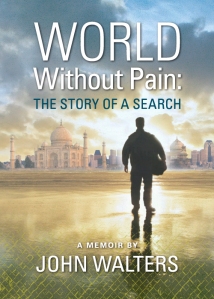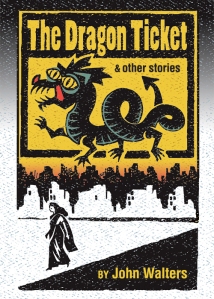Even more than the Korean War, the Vietnam War defined the political, cultural, sociological, and diplomatic landscape of America in the second half of the twentieth century. I grew up in its shadow, as anti-war protests enflamed college campuses and reactions to the war infused popular songs, television, and films. Being drafted and sent off to fester in the jungles and rice paddies of a nation halfway around the world that nobody really comprehended was an ever-present dark specter that hung over me and my contemporaries. The bleakness, moral turpitude, and paranoia of the war years suffused every aspect of life in the United States. This was brought out brilliantly in the musical-turned-into-film “Hair”, in which the seemingly-innocent group of supposedly-carefree hippies cannot escape the ever-prevalent indirect and direct effects of the war.
This book is an origin story. It begins all the way back in 1919 at the Versailles Peace Conference after World War I, where young Ho Chi Minh tried to approach U.S. president Woodrow Wilson to plead for help for his country. From there it moves forward to 1940, and it documents the struggle France faced during and after the Second World War to hold on to Indochina. By the close of the war, the trend was the liberation of former colonies, as exemplified by the granting of full independence to the Philippines by the United States and by Great Britain’s withdrawal from India. But France determined to hold onto Vietnam and sought America’s help to do so. The leaders of Vietnam thought that the U.S. would aid them against the colonial power, but for reasons that had nothing to do with Vietnam itself, chiefly the importance of French cooperation in the establishment of security in postwar Europe, America chose to side with France. There was, too, of course, the fact that the most powerful faction in Vietnam was the communists, but in the beginning the Viet Ming were willing to work with other nationalist parties in the country to achieve independence. Later, under president Dwight Eisenhower and secretary of state John Foster Dulles, the so-called “domino theory” was created to justify U.S. policy in Southeast Asia and an increase of aid to France in the ongoing bloody battle against the Vietnamese insurgents.
From the beginning the French were in a hopeless position. They were fighting far from home against a nationalist movement. They could not hope to emulate their opponents’ patriotic zeal. True, the Viet Ming accepted help in arms and training from the Soviets and the Chinese, but it was far less than that provided to the French by the Americans. Inexorably, though, the French lost ground. Their last great battle in the highlands of northwest Vietnam as the world convened to discuss the fate of the country at the Geneva Conferences in 1954 reads like a novel in this account, switching back and forth as it does between the monsoon-drenched, exhausted, starving, besieged French garrison and the concurrent political haggling. In the end, the French were forced to leave the country in ignominious disgrace, but not before they had passed the baton to the Americans. By this time, in the American psyche, the Vietnam debacle had been blown up into a battle of the West against the forces of world communism, and the U.S. took over the struggle as if it were a holy war. The nations at the Geneva Conference decided to temporarily divide the country of Vietnam into two political entities at the 17th parallel, and the United States quickly stepped into the void the departure of France left, supplying support for the oppressive South Vietnamese government, arms, and a horde of advisors that increased rapidly in number as time went on.
And the rest, as they say, is history. American was drawn relentlessly into a conflict that consumed its finances, destroyed politicians, tore its populace into pro- and anti-war camps, and killed almost 60,000 U.S. soldiers.
This book stops short of documenting direct American military involvement in the war. It focuses mainly on the war between the French and the Vietnamese, which was, in fact, the struggle of a national populace against an occupying power. It does, though, clearly bring out the inexorable way that the United States became caught in the quagmire. In hindsight, we can clearly see the shortsightedness and bad decisions that led to the nightmare of America’s involvement in the Vietnam War, but at the time, considering the country’s political climate, it seems improbable that anyone, no matter how clear-thinking and prescient, could have extricated America from the dark, slippery slide into the quicksand.
If the war, in the end, was inevitable, then what is the value of a book such as this? America’s recent forays into Iraq and Afghanistan certainly do not give any indication that lessons have been learned from past mistakes. Still, when a nation is in the midst of conflict, a clear-eyed appraisal of the background, motivations, and consequences is often well-nigh impossible. It is only in retrospect, in the perusal of hitherto unavailable documents, as in this book, that it is possible to discern what really happened and why. So it has been throughout the history of humankind. Someday, someday, I hope we figure it all out and learn the right lessons.
This is a brilliant book. It is an exemplary work of scholarship and eminently readable as well. I highly recommend it.
































